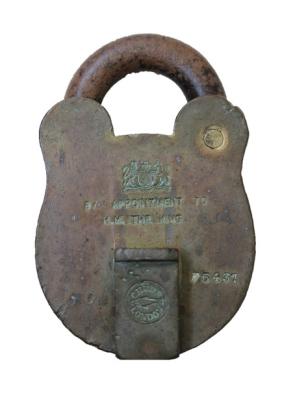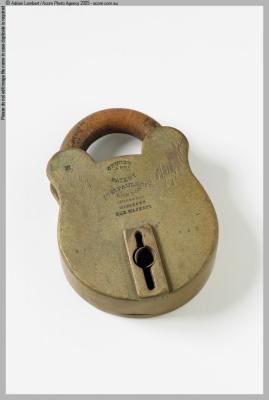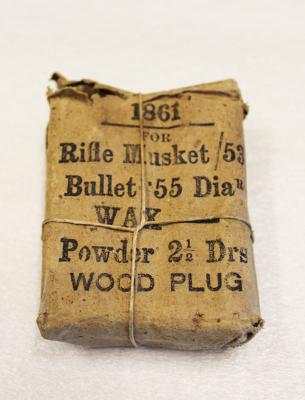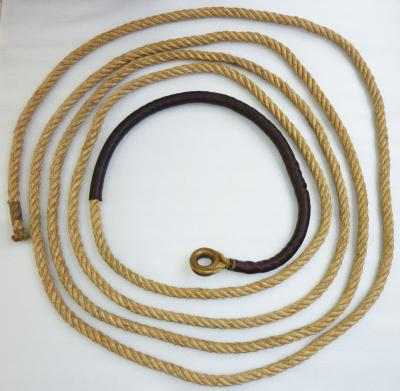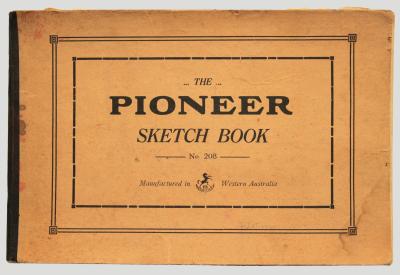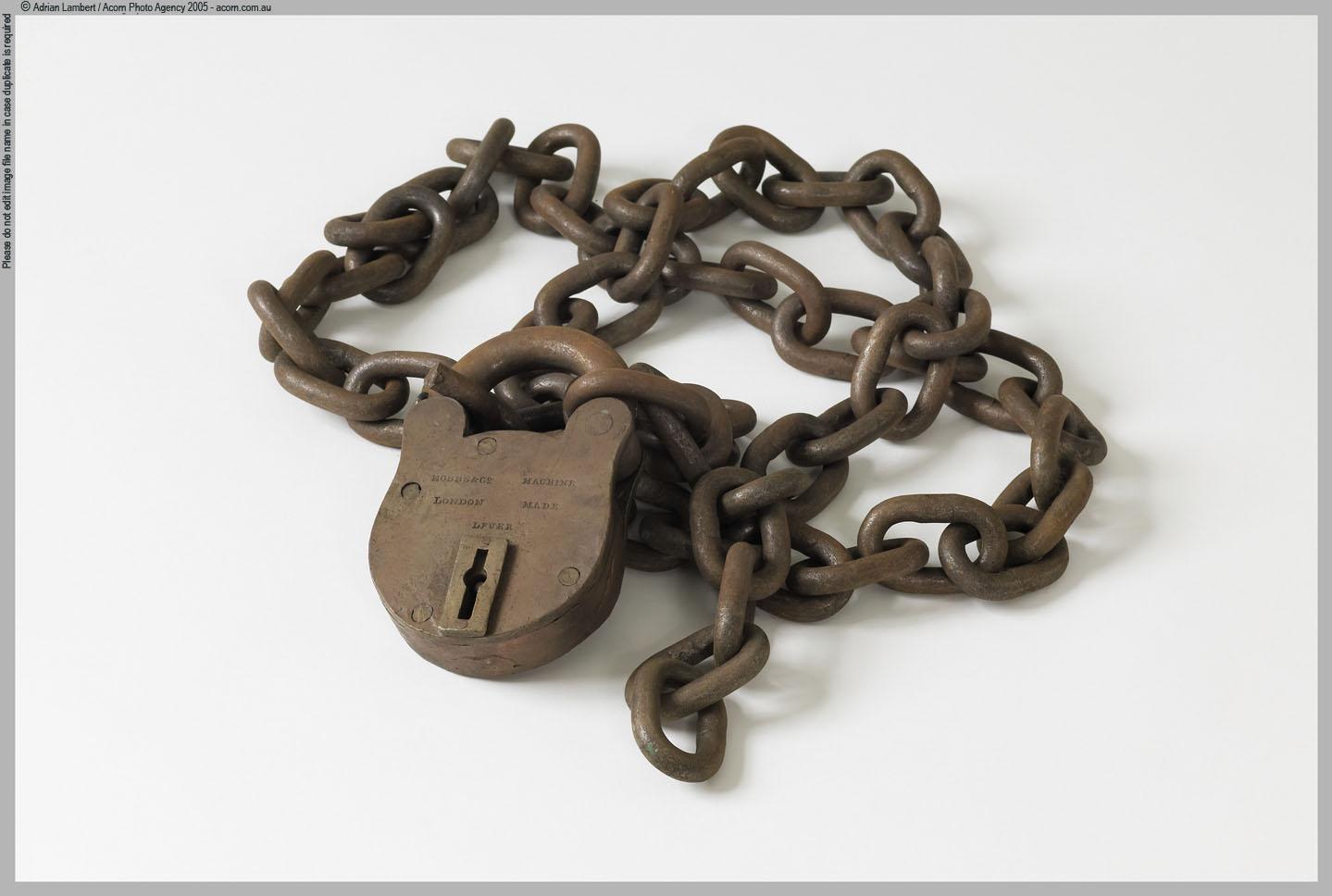Chain with padlock
Length oval-shaped, metal linked chain with a shield shaped, flat bodied, Hobbs & Co brass padlock attached. Padlock has steel staple in locked position, with no key, and no keyhole cover. Remains of one link cut in half attached to staple of padlock. Maker's mark stamped on the front of the padlock reads, 'HOBBS & Co. MACHINE/ LONDON MADE/ LEVER'. Padlock is looped through a length of unpainted, metal, oval-linked chain.
Details
Details
HOBBS & Co. MACHINE/ LONDON MADE/ LEVER
Locks have existed, in some form or another, for millennia. Forms of security have developed as societies spread, and with these changes, locks themselves have evolved. One of the most revolutionary changes was the invention of the padlock. At the root of this device is its portability; the idea that a lock can be added to something and then removed again. Padlocks are a detachable lock that fastens and secures with the use of a ‘shackle’. The shackle can be a hinge or slide, with the assistance of a spring, but it is the fact that once open it can be removed that makes a padlock superior. Security at the Convict Establishment was originally controlled by Western Australia's first Comptroller-General of Convicts, Edmund Henderson, who administered the Convict Establishment for thirteen years. The primary responsibilities of the Comptroller-General were to direct convict labour, and control convict discipline. This included security measures, for both those inside the Establishment, and those out on work parties. As part of this system of control, the padlock was an essential tool, as it could be implemented where needed, and used away from the Prison site.
